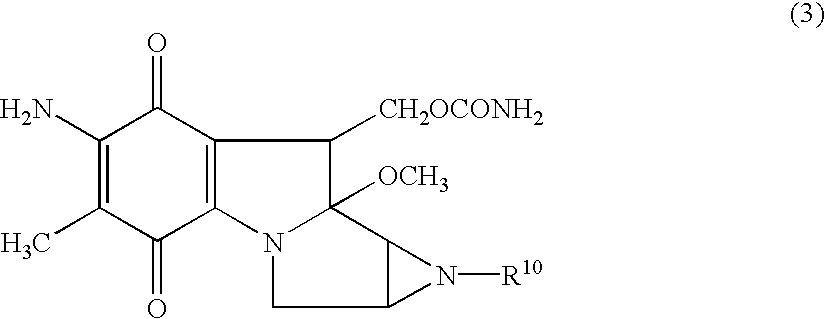Novel antibodies reactive with human carcinomas
- Summary
- Abstract
- Description
- Claims
- Application Information
AI Technical Summary
Benefits of technology
Problems solved by technology
Method used
Image
Examples
example 2
[0396] Characterization of the BR96 Monoclonal Antibody
[0397] Isotype Determination
[0398] To determine the class of immunoglobulin produced by the BR96 hybridoma, the following techniques were utilized:
[0399] (a) Ouchterlony Immunodiffusion
[0400] An aliquot of supernatant of the hybridoma cells was placed into the center well of a 25% agar plate. Monospecific rabbit anti-mouse Ig isotype antibodies (Southern Biotechnology, Birmingham, Ala.) were placed in the outer wells and the plate was incubated for 24-28 h at room temperature. Precipitation lines were then read.
[0401] (b) ELISA Isotyping
[0402] Dynatech Immulon 96-well plates were coated with goat anti-mouse Ig antibodies at 1 .mu.g / ml concentration, 50 .mu.l / well in PBS and left covered overnight at 4.degree. C. The plates were washed with PBS / Tween 20, 0.05% and blocked with medium at 100 .mu.l / well for 1 h at room temperature. After washing the plates, supernatants from the BR96 hybridoma were added and incubated at room tempe...
example 3
[0416] Internalization of the BR96 Monoclonal Antibody within Carcinoma Cells
[0417] Studies were conducted to measure internalization of the BR96 monoclonal antibody within antigen-positive carcinoma cells. According to one procedure, BR96 was conjugated to the ricin A chain toxin to form an immunotoxin, BR96-RA, whose internalization by carcinoma cells was then determined. Uptake of the conjugate by the carcinoma cells was assessed by determining to what extent the tumor cells were killed by ricin A chain.
[0418] Conjugation of the antibody to the toxin was carried out as follows: Deglycosylated ricin-A chain (Inland Labs, Austin, Tex.) (see, also, Blakey et al., Cancer Res., 47:947-952 (1987)) was treated with dithiothreitol (5 mM) prior to gel filtration on G-25 Sephadex using PBS, pH 7.2 as eluant. This was added in a 2:1 molar ratio to the antibody in PBS, the antibody having been previously modified with N-succinimidyl-3-(2-pyridyldithio) propionate (SPDP) (Pierce, Rockford, Il...
example 4
[0424] Cytotoxicity of Unmodified BR96 Monoclonal Antibody
[0425] Three types of experiments were performed to follow up on the unexpected observation that monoclonal antibody BR96 appeared to be cytotoxic by itself (i.e., in unmodified state) when tested in a FACS assay. So as to avoid an effect of complement in serum, all sera used were heat inactivated (56.degree. C. for 30 min); in addition, some of the experiments with FACS analysis (as described below) were performed on cells which were grown in serum-free medium and tested in the absence of serum.
[0426] First, living suspended cells from a variety of antigen positive carcinoma lines (3396, 2987, 3619) were treated with monoclonal antibody BR96. Cells (5.times.10.sup.5) were incubated on ice for 30 min with 100 .mu.l of BR96 or control monoclonal antibody at a concentration of 60, 30, 15, 7.5 and 3.8 .mu.g / ml in culture medium (IMDM, 15% FBS). After washing the cells twice with culture medium, the cells were suspended in 500 .m...
PUM
| Property | Measurement | Unit |
|---|---|---|
| Volume | aaaaa | aaaaa |
| Volume | aaaaa | aaaaa |
| Volume | aaaaa | aaaaa |
Abstract
Description
Claims
Application Information
 Login to View More
Login to View More - R&D
- Intellectual Property
- Life Sciences
- Materials
- Tech Scout
- Unparalleled Data Quality
- Higher Quality Content
- 60% Fewer Hallucinations
Browse by: Latest US Patents, China's latest patents, Technical Efficacy Thesaurus, Application Domain, Technology Topic, Popular Technical Reports.
© 2025 PatSnap. All rights reserved.Legal|Privacy policy|Modern Slavery Act Transparency Statement|Sitemap|About US| Contact US: help@patsnap.com



